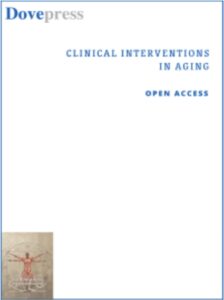Publications

The Differences in Parameters in Ultrasound Imaging and Biomechanical Properties of the Quadriceps Femoris with Unilateral Knee Osteoarthritis in the Elderly: A Preliminary Observational Study
Authors: Junyi Li 1, 2, Zugui Wu 3, Bin Lu 2, Congcong Li 1, Shuai Wang 1, Jiahao Zhang 1, Xingxing Shen 1, Ruian Xiang 1, Jiahao Chen 1, Tao Jiang 1, Chuanxi Zhao 1, Wengang Liu 1, Xuemeng Xu 1
Affiliations:
- Department of Orthopedics and Traumatology, The Fifth Clinical College of Guangzhou University of Chinese Medicine, Guangdong Provincial Second Hospital of Traditional Chinese Medicine, Guangdong Provincial Key Laboratory of Research and Development in Traditional Chinese Medicine, Guangzhou, People’s Republic of China
- Department of Osteoarthropathy II, Luoyang Orthopedic-Traumatological Hospital of Henan Province (Henan Provincial Orthopedic Hospital), Luoyang, People’s Republic of China
- Department of Orthopedics and Traumatology, The Third Affiliated Hospital of Yunnan University of Chinese Medicine, Kunming Municipal Hospital of Traditional Chinese Medicine, Kunming, People’s Republic of China
Journal: Clinical Interventions in Aging - August 2024, Volume 2024, Issue 19, Pages 1479-1491 (DOI: 10.2147/CIA.S442610)
-
Field & Applications:
- Medical
- Orthopedics
- Rheumatology
- Musculoskeletal disorder
- Gerontology / Ageing
- Muscle symmetry
- Validity
Purpose: Our study aims to evaluate differences in muscle parameters of the quadriceps muscles in patients with knee osteoarthritis (KOA) in older adults.
Methods: The study included 40 patients diagnosed with unilateral knee osteoarthritis in the KOA group (KG) and 40 asymptomatic elderly individuals in the control group (CG). Muscle ultrasonic mean echo intensity and shear modulus, as well as tone and stiffness of the rectus femoris (RF), vastus medialis (VM), and vastus lateralis (VL) were analyzed. Additionally, clinical correlations were performed.
Results: In the KG group, there were significant differences in echo intensity, shear modulus, and tone between the affected and unaffected sides for RF (p=0.003, 0.019, 0.014), while VM showed significant differences in shear modulus and tone (p=0.006, 0.002). Additionally, VL exhibited significant differences in echo intensity, shear modulus, and stiffness (p=0.007, 0.006, 0.010). Compared to the CG group, the KG group showed significant differences in echo intensity of the affected side RF (p=0.001). VM exhibited statistically significant differences in echo intensity and shear modulus (p < 0.001, p=0.008), while VL showed statistically significant differences in echo intensity, tone, and stiffness (p < 0.001, p=0.028, p < 0.001). The correlation results showed that patients with unilateral KOA, VM, and VL echo intensity were correlated with K-L grade (r = 0.443, p=0.004; r = 0.469, p=0.002). The tone of VL was correlated with VAS and WOMAC (r = 0.327, p=0.039; r = 0.344, p=0.030).
Conclusion: The parameters of the quadriceps femoris muscle exhibit asymmetry between the affected and unaffected sides in patients with unilateral KOA, as well as a difference between the dominant side of healthy older individuals and the affected side of KOA.
Keywords: knee osteoarthritis, quadriceps femoris, ultrasound, muscle tone, stiffness
The parameters of the quadriceps femoris muscle exhibit asymmetry between the affected and unaffected sides in patients with unilateral KOA and a difference between the dominant side of healthy older individuals and the affected side of KOA. The echo intensity and muscle tone are relevant variables for the clinical grade and score of KOA, thus deserving consideration in prevention and rehabilitation strategies.


